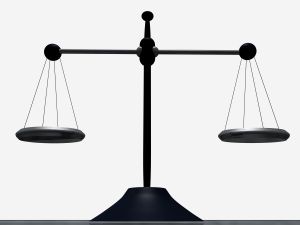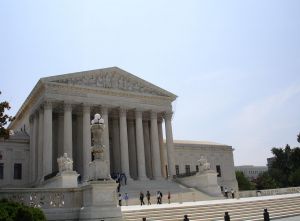 Up until this week, Massachusetts law allowed for the imposition of community lifetime parole (CPSL) under G. L. c. 127 § 133D. CPSL is intensive parole supervision by the parole board. It may only be imposed after a defendant is convicted of a sex offense. A CPSL sentence begins after a defendant has completed a committed or probationary sentence on the underlying criminal offense, and lasts for life. While on CPSL, a defendant is subject to a set of mandatory conditions, as well as various other conditions, that may imposed at the discretion of the parole board. If a defendant violates a condition of CPSL, the parole board is required to send him back to jail – for 30 days for the first violation, 180 days for the second violation, and 1 year for every violation after that.
Up until this week, Massachusetts law allowed for the imposition of community lifetime parole (CPSL) under G. L. c. 127 § 133D. CPSL is intensive parole supervision by the parole board. It may only be imposed after a defendant is convicted of a sex offense. A CPSL sentence begins after a defendant has completed a committed or probationary sentence on the underlying criminal offense, and lasts for life. While on CPSL, a defendant is subject to a set of mandatory conditions, as well as various other conditions, that may imposed at the discretion of the parole board. If a defendant violates a condition of CPSL, the parole board is required to send him back to jail – for 30 days for the first violation, 180 days for the second violation, and 1 year for every violation after that.
This past week, however, in Commonwealth v. Cole, the Supreme Judicial Court determined that the statute authorizing CPSL is unconstitutional because it violates the separation of powers doctrine. In Cole, the defendant pled guilty to a sex offense and was classified as a level 2 sex offender. He was required to register with the Sex Offender Registry Board (SORB), and provide SORB with notice of any change of address. The defendant failed to notify SORB that he had moved from Brockton to Taunton and was charged with failure to register. He pled guilty and was sentenced six months probation and CPSL. The defendant completed his probationary term and began his CPSL sentence. Once his CPSL sentence was imposed, the defendant filed a motion to correct his sentence on the ground that he should not have been sentenced to CPSL for several reasons, including the fact that CPSL is unconstitutional under the separation of powers doctrine.
In its decision, the SJC noted that even though CPSL is referred to as “parole,” it is much more similar to probation. Specifically, when a person is on parole, the parole board has the authority to release a person from his committed sentence if the board finds that that person will live and remain at liberty without violating the law and the release is not incompatible with public safety. The board can establish and enforce conditions of parole. If a person violates those conditions, the board has the authority to send him back to jail, but only for the remainder of the original committed sentence – for example, if the person was sentenced to 2 years in prison, was paroled after 1 year, and violated a condition of parole, the board could only send him back to jail for the remaining year left on the sentence – the board does not have the ability to extend the original term of incarceration, and therefore could not order the person to be serve anything beyond the original 2 years. In contrast, with CPSL, the board does have the authority to send a person back to jail for longer than the original sentence, thereby increasing the term of imprisonment and ordering additional incarceration above and beyond what the court originally ordered – as stated above, 30 additional days for the first violation, 180 additional days for the second violation, and an additional year for every violation after that.
 Massachusetts Criminal Lawyer Blog
Massachusetts Criminal Lawyer Blog







 On December 24, 2013, in Commonwealth v. Diatchenko, the Supreme Judicial Court ruled that all life-without-parole sentences for
On December 24, 2013, in Commonwealth v. Diatchenko, the Supreme Judicial Court ruled that all life-without-parole sentences for  On December 24, 2013, in
On December 24, 2013, in  For a criminal charge to issue against an individual, a police officer must submit an application to the court for a criminal complaint. The application includes the alleged facts and the charges sought. A clerk magistrate then reviews the application to determine whether there is a sufficient basis for the complaint to issue. The specific legal standard is whether the information presented to the clerk magistrate establishes probable cause to believe that the individual committed a particular crime. If the clerk magistrate finds that there is probable cause, the complaint issues and the individual charged is brought to court and is arraigned on the charges.
For a criminal charge to issue against an individual, a police officer must submit an application to the court for a criminal complaint. The application includes the alleged facts and the charges sought. A clerk magistrate then reviews the application to determine whether there is a sufficient basis for the complaint to issue. The specific legal standard is whether the information presented to the clerk magistrate establishes probable cause to believe that the individual committed a particular crime. If the clerk magistrate finds that there is probable cause, the complaint issues and the individual charged is brought to court and is arraigned on the charges. On August 2, 2012, the Massachusetts legislature passed the
On August 2, 2012, the Massachusetts legislature passed the